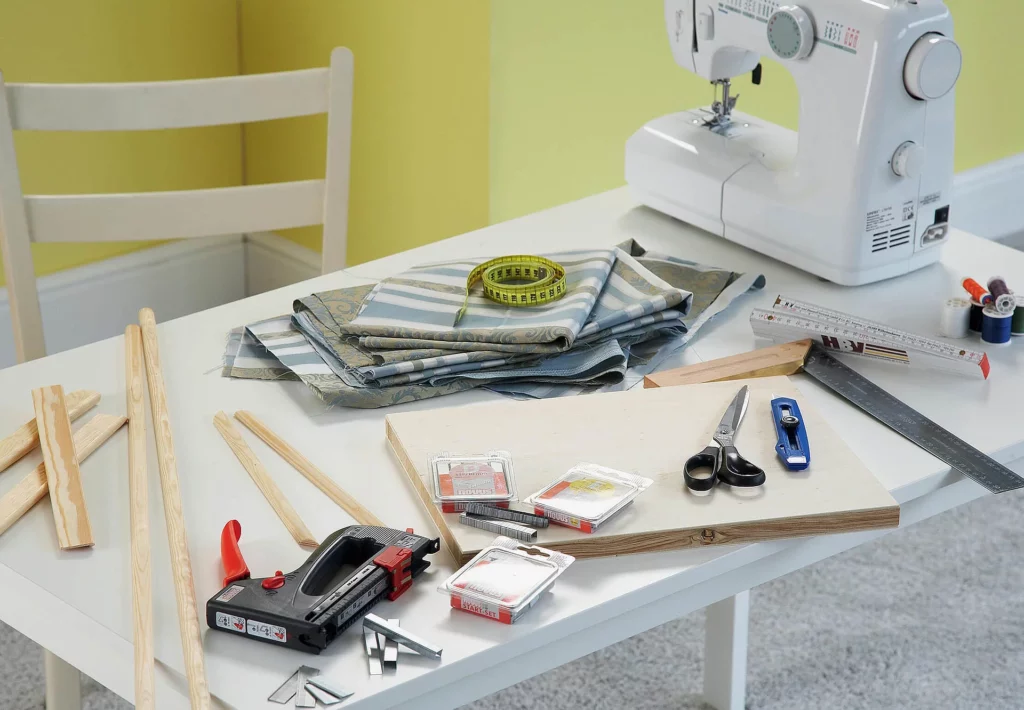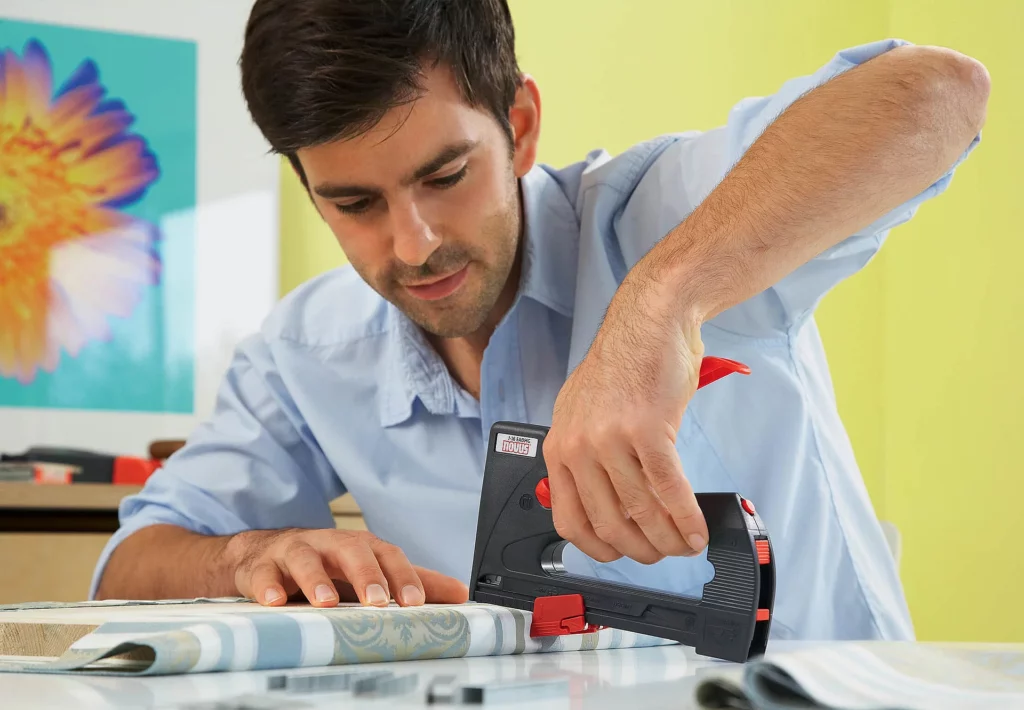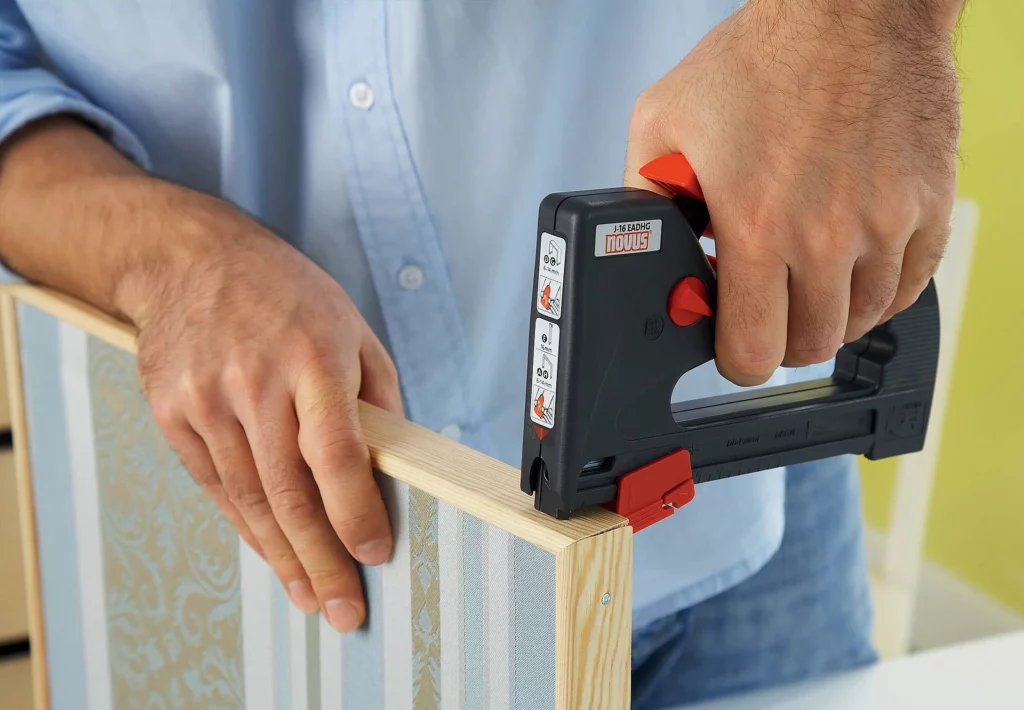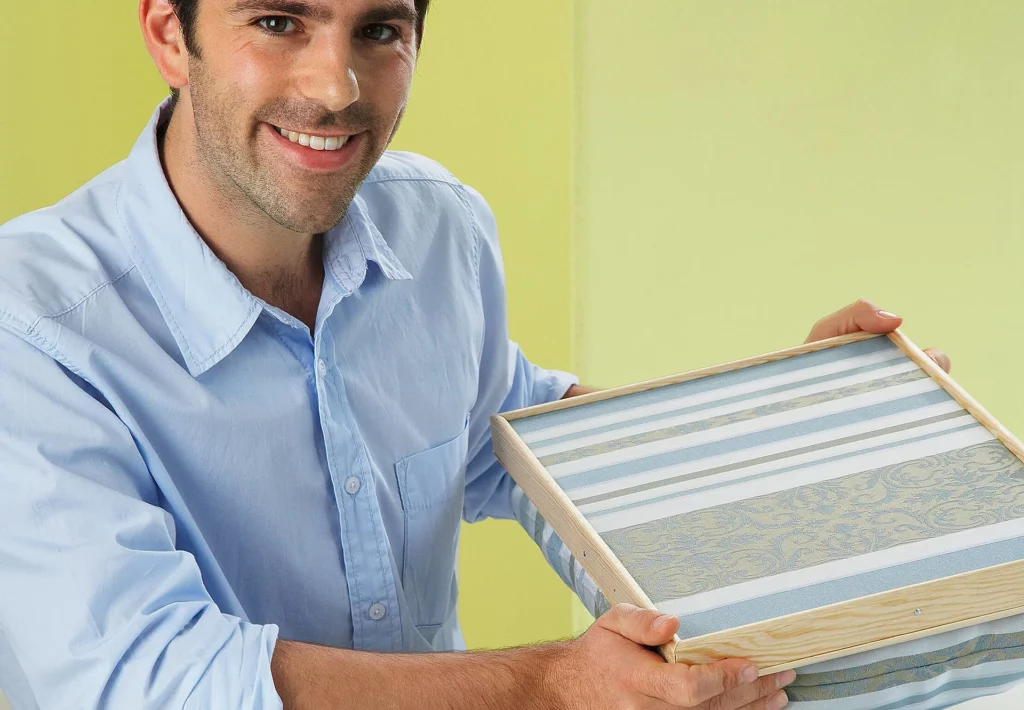The practical cushioned lap tray you can make yourself.
The laptop is a constant companion for many people today. On the sofa or in bed, or in a deck chair on the balcony, a laptop gives you the flexibility to work, surf or chat in comfort, and a lap tray is the perfect accessory. Originally developed in the south of Scotland, the lap tray is also an excellent support for writing letters, reading or drinking tea. The well-padded tray sits securely on your legs, offers a stable surface, doesn’t pinch and even looks good with its pretty fabric cover.
Incidentally, a cushioned lap tray is also ideal for children on long car journeys, as it gives them room to draw and play.

To build your own lap tray, you need the following materials:
- sturdy fabric, 140 x 120 cm
- wood strips for the frame
- decorative mouldings, 10–15 mm wide
- thin board, 40 x 30 cm
- cushion, 40 x 30 x 10 cm or padding
- hand tacker (e.g. Novus J-29) or cordless tacker (e.g. Novus J-214 EA)
- fine wire staples
- optional glaze or varnish for the decorative mouldings
And here’s how it’s done:
Staple the taut fabric onto the board.
Use the tacker to cover the board with fabric, folding the fabric over the edges onto the back.

Tack a frame made of wood strips to the board.
Staple the wood strips onto the board to create a frame.

Sew a cushion cover.
Sew a cushion cover from the fabric or fold the ends in appropriately, leaving one side open.

Staple the cushion cover onto the board.
Fasten the cushion cover to the board with the tacker.

Fill the cover with padding or a cushion.
Slide in the cushion filler or padding and close the opening with the tacker or sew it up.

Cut the decorative moulding to size.
Now it’s time for the decorative moulding: saw the pieces to length with mitred ends and, if you wish, paint them to match the colours of the cover.

Staple the decorative moulding onto the board.
Finally, fasten the decorative moulding to the fabric-covered board using the tacker. The distance holder on the NOVUS J-16 EADHG makes it possible to staple very neatly and precisely: with the help of this spacer, the staples around the tray can be driven exactly parallel into the wood. When stapling, make sure the staples are long enough: you should use 1/3 of the staple length for the fastening material, and we recommend 2/3 staple length for the anchoring material, so that the staples are anchored by one third in the decorative moulding and two thirds in the board.

The finished lap tray is ready to be used.
Your lap tray is ready!

